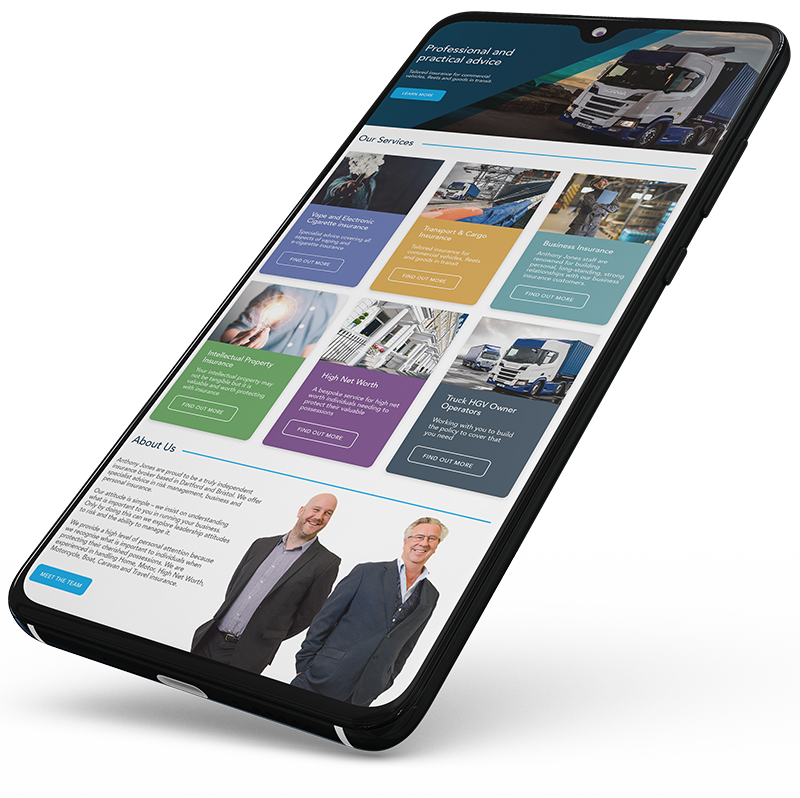There are many benefits to developing a good driver communication strategy. It can contribute to fleet safety and efficiency, and can even help to improve your drivers’ mental health and wellbeing.
In this post we’ll outline some strategies for effective driver communication in your fleet.
For more information on how we can help you and your fleet, get in touch with us on 020 8290 9099 or email us at commercial.motor@anthonyjones.com.
The Benefits of a Driver Communication Strategy
- Communicate your fleet strategy and ensure everyone is working towards the same goals. For example, let’s say you’re looking to electrify your fleet. Your driver communication strategy can help you explain how and why you’re doing it, while letting your drivers know what they can do to help the process.
- Improve driver behaviour. If you want your drivers to develop good driving habits while abandoning dangerous, harmful, or inefficient driving habits, then effective communication is key.
- Improve your drivers’ mental health and wellbeing. Driver communication goes both ways – they should feel they can talk to you just as easily as you talk to them. Creating a culture of open communication can make a huge difference in addressing and reducing on-the-job stress.
Creating Your Driver Communication Strategy
Your driver communication strategy should bring together the ways you’re able to keep your drivers in the loop, when you should use them and build in systems to allow two-way communication. This may include:
- A driver’s handbook
- Driver inductions
- On-going training and development
- Policies for what form of communication to use for different types of information
- Leveraging tech
Create A Driver’s Handbook, But Keep It Brief
A driver’s handbook can double as an introduction to your policies for new drivers, and as a point of reference for established drivers who want to revisit certain policies and procedures.
But don’t assume that every driver will read every page of your handbook. The longer your handbook, the less likely your drivers will want to read it.
What to Include in your Driver’s Handbook
Aim to make your driver’s handbook as brief as possible, and focus on the practical rather than the aspirational. For example, it should contain clear details on vehicle loads, daily walkaround checks and long-term maintenance schedules, ongoing license and training requirements, rest periods, and so on.
Driver Induction and Ongoing Training and Development
What to Include in Your Driver Induction
Give every new driver a thorough induction. This is an opportunity to explain your fleet’s policies and procedures, along with your long-term goals, in much more detail than would be possible in a driver’s handbook.
On-Going Training and Development
Every driver will have to take 35 hours of Driver CPC training every five years to stay qualified. But you could offer ongoing training and development that goes above and beyond these regulatory requirements.
How Often Should You Meet Your Drivers?
Aim to meet with every driver in your fleet at least once a year. Treat it as a chance to catch up, and to reflect on what’s gone well, along with any possible areas of improvement.
Encouraging Open Communication
And remember that a driver communication strategy should be a two-way street. Your drivers should feel free to discuss any aspect of their work with you at any time.
Learn more about how open communication can contribute to an effective fleet safety culture.
Think About How You Communicate Different Forms of Information
As part of your driver communication strategy, create a system for determining how each type of information should be distributed.
Complex Discussions and Appraisals
An open and honest face-to-face discussion is ideal for complex discussions, staff appraisals, and for building relationships with your drivers. A physical handbook can act as a useful point of reference should any drivers ever need to look up certain practical elements of your policy and procedures.
Urgent Information and Updates
But different forms of information will need different forms of communication. For example, if you urgently need to share some time-sensitive information, you really cannot beat a phone call. Yet a quick text message or email update would work better for short or less pressing updates or reminders.
Important Documents
Use email and your company’s intranet system to share and securely store important documents, such as contracts and policy updates. Email’s also useful for conducting conversations for which you might need a written record.
Emergency Protocols
Your driver communication strategy should also feature emergency protocols. In an emergency situation, how will you quickly communicate with your drivers to protect them, along with their vehicles and freight?
Make Full Use of Tech
Technology can play a huge role in your driver communication strategy:
- Use a company intranet to allow drivers to securely access key policy documents, and to communicate policy changes and long-term goals. Some intranet systems also have task management features, so that everyone can know everyone else’s movements at all times.
- Create private online chats for your drivers, using Slack, or perhaps a closed Facebook or WhatsApp group. Drivers can use these to connect with each other, to ask questions, and to discuss their thoughts and experiences. Ideally, management should not be involved in these chats, as this might compromise open communication.
- GPS tech can give you a real-time idea of exactly where each of your drivers are at any given moment. Driver monitoring technology can let you keep tabs on your drivers’ performance on the roads.
- Detailed insights into your drivers’ behaviour can help you identify your best performing drivers along with any areas for improvement, which can make ongoing training and development more targeted and effective.
Effective communication is essential for getting buy-in for any tech you use. Go for total transparency – what tech are you using, why are you using it, and what do you hope to achieve?
Read our full guide to using tech and communication to improve driver behaviour in your fleet.
Tailored Support For Fleets From Anthony Jones
At Anthony Jones we specialise in insurance for the transport and logistics sector. If you have any questions about your legal obligations as a driver or fleet manager, call us on 020 8290 9099 or email commercial.motor@anthonyjones.com.


